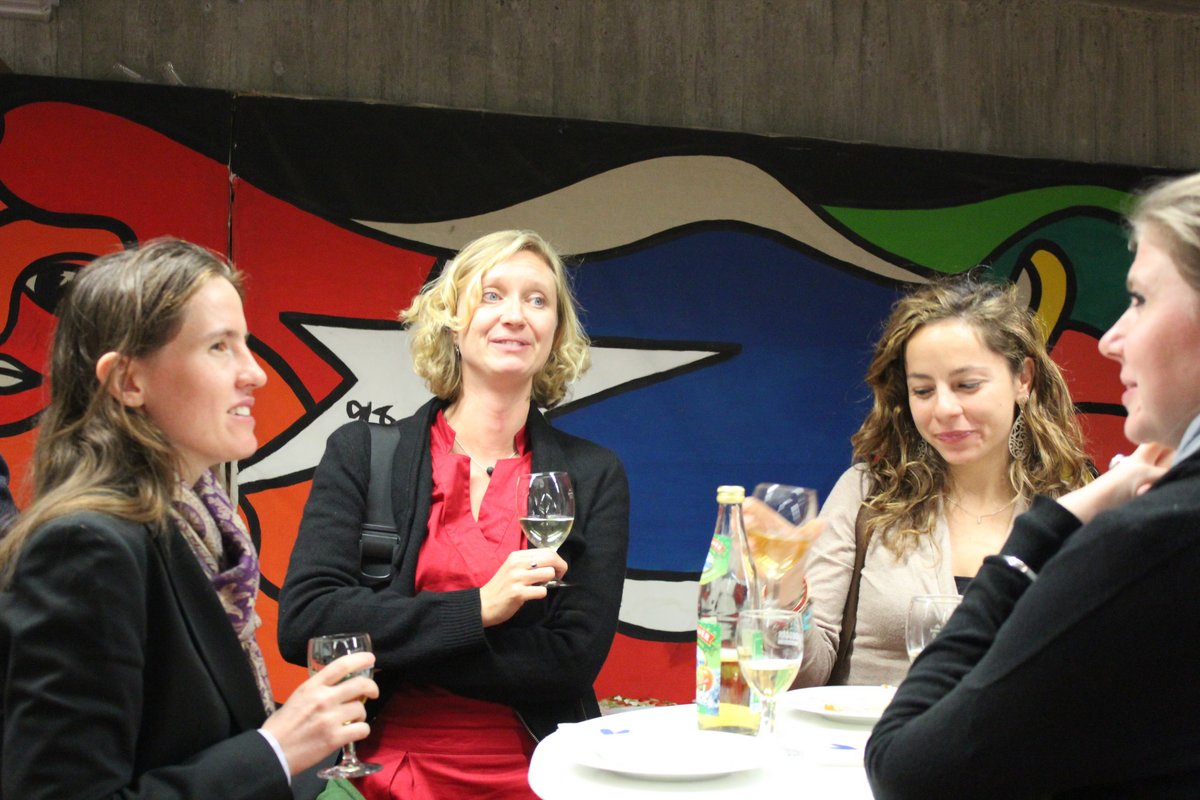A different Passion: How and why would someone write the history of the horse?
Zukunftskolleg Lecture with Prof. Dr. Dr. h. c. Ulrich Raulff on October 19, 2016. Video available.
Ulrich Raulff‘s latest publication "Das letzte Jahrhundert der Pferde. Eine Trennung" (The last century of horses. A separation, 2015), gives a historical overview on the development of the relationship between man and horse. In his lecture, Raulff reflected on the writing process of the book, or, as he put it, “how I had done this and why I had done this.”
Ulrich Raulff explains his idea to write a book about the “Age of Horses” with his own background: He grew up in a rural area in the west of Germany where horses were naturally around and he had also a high interest in military history, in which horses undoubtlessly play an important role. His contacts to the Ecole des Annales led him to the question, why animals should be left out of the world of ideas.
But the real impulse for the book came when he stayed for some time at the U.S.-American West coast, 20 years ago. There, Ulrich Raulff noticed the striking presence of the horse in the iconography of the American everyday life and he began casually to think about the importance of the horse for the development of the north American civilization.
In 2003, Ulrich Raulff went to a lecture by Reinhart Koselleck who had already done some research on the history of horses. Hearing Koselleck, Raulff felt that the history of mankind and horses is not only based on necessity, but also on affections and emotions. An all-embracing history of mankind and horses would have to take this into account and would not only be the history of economics and technology, but would also be about art, literature and emotions. This met with the idea of a “histoire totale” of the Ecole des Annales. In trying to write a comprehensive history of the horse, Ulrich Raulff therefore refers in his book not only to researchers like Reinhart Koselleck, Bruno Latour, or Lynn White Jr., but also to painters like George Stubbs or Théodore Géricault and writers like Leo Tolstoi or Thomas Hardy.
Also, the structure of his book refers to the structure of Aby Warburg’s library, to connect real, epistemic, imaginary and affective points of view. Therefore, the first histroy of the horse is the “Real History of the Horse” which is determined by its ability to deliver kinetic energy. Horses allowed mankind to control larger territories and thus increased its power. This led to a huge military relevance of the horse. Furthermore, horses were also used as draught animals. For example, in the fast growing cities of the 19th century, horses played a major role in securing urban transport. This is one of the reasons why the demand of horses grew continuously in the 19th century and reached its all-time climax in 1880.
The second history of the horse is the “Knowledge History of the Horse”. This history can be traced back to ancient times. Starting from Arabic peoples, the knowledge about horses spread across the Iberian Peninsula and from there to the rest of Europe. With the Spanish, horses and the knowledge about horses also reached America.
The third history of the horse is the “Imaginary History of the Horse” in which Ulrich Raulff sums up the importance of the image as a “cavalier hero” for the European monarchists. We come across the image “man on a horse” in the antiquity, renaissance, baroque and even until the mid 20th century. This image is closely associated with authority and sovereignty.
The fourth history of the horse is “The History of Affect or Pathos”. There are different points of where to start this history. Just to name an example, the horse played a very important role in the social novels of the 19th century. As a representation of the passion of woman, we encounter the horse in Madame Bovary, Anna Karenina, Effi Briest or Tess from the D’Urbervilles. And Johann Wolfgang von Goethe and Ernst Jünger show the cruelty of war through the fate of horses.
At the end of his lecture, Raulff came back to the question why he wrote a book about the last century of the horses. His hopes were that by investigating history through the changing relationship between horse and mankind he could paint a different picture of history itself – a history that combines aspects of esthetics, ideas, technology and economics in a new way. “A history, that could be both sensual and intellectual at the same time.“ Raulff leaves the decision if he has succeeded to the reader.









